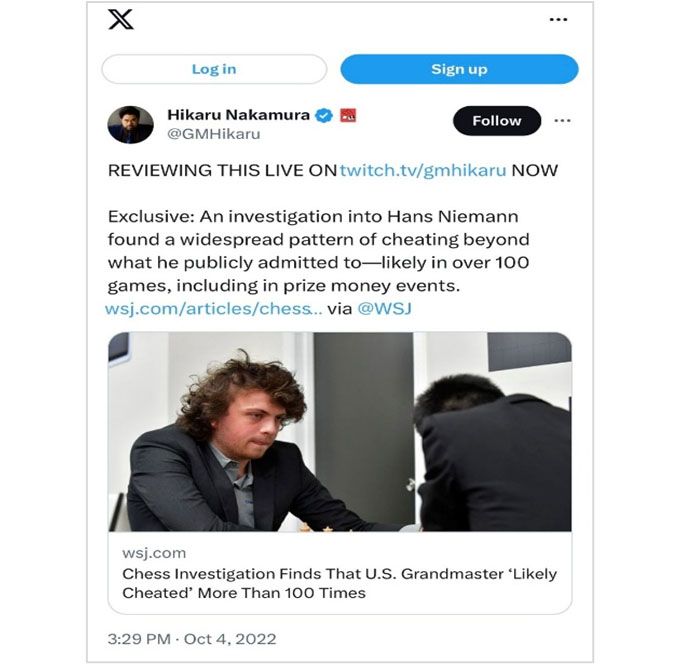Ninth Circuit Upholds Block of Idaho Law Excluding Transgender Women from Public School Female Sports Teams
In the latest legal battle centered around transgender athletes’ participation in sports, the Ninth Circuit affirmed the district court’s preliminary injunction against enforcement of Idaho’s Fairness in Women’s Sports Act (H.B. 500) (the “FWSA”) (Hecox v. Little, No. 20-35813 (9th Cir. Aug. 17, 2023)).
As the lower court aptly synthesized: “The primary question before the Court —whether the Court should enjoin the State of Idaho (the “State”) from enforcing a newly enacted law which precludes transgender female athletes from participating on women’s sports — involves complex issues relating to the rights of student athletes, physiological differences between the sexes, an individual’s ability to challenge the gender of other student athletes, female athlete’s rights to medical privacy…and the rights of all students to have complete access to educational opportunities…available at school.”
Such issues, which have been a topic of public debate in recent years, are now the subject of an ongoing constitutional challenge in federal court.
Things began in March 2020 when Idaho enacted the FWSA barring all transgender girls and women from participating in public school female sports teams at every age (i.e., primary school through college) and at every level of competition (i.e., intramural to elite teams), becoming the first state to do so. According to court papers filed by the State, the legislature passed the FWSA in an attempt to “uphold the traditional practice of sex separation in sports” and address what it perceived were issues of fairness and opportunities in female sports. In opposition, the Plaintiffs admit that the promotion of sex equality and opportunities for female athletes are important governmental objectives but contend that the FWSA is not substantially related to such objectives and that the FWSA discriminates between cisgender athletes, who may compete on athletic teams consistent with their gender identity, and transgender women athletes, who may not compete on athletic teams consistent with their gender identity.
The FWSA text mandates that “[a]thletic teams or sports designated for females, women, or girls shall not be open to students of the male sex.” The FWSA also contains a “dispute” verification process whereby any individual can challenge the sex of any female student athlete (whether transgender or not) in Idaho. A “dispute” would require the female athlete to undergo an intrusive medical exam to “verify the student’s biological sex.” Notably, prior to the passage of H.B. 500, Idaho high school interscholastic athletic association policy allowed transgender girls in Idaho K-12 athletics to compete on girls’ teams after completing one year of hormone therapy suppressing testosterone under the care of a physician for purposes of gender transition. At that time, NCAA policies offered the same option for transgender women attending member colleges and universities.
Shortly after the FWSA was signed into law, Lindsay Hecox (“Lindsay”) and Jane Doe (“Jane” and together with Lindsay, the “Plaintiffs”) filed a lawsuit seeking a declaratory judgment that the FWSA violates the Constitution, among other claims, and for a preliminary injunction blocking enforcement. Lindsay is a transgender woman who wanted to try out for the Boise State University (“BSU”) women’s track and cross-country teams. Jane is a cisgender woman who plays on high school varsity teams and at the relevant time feared that her sex would be disputed, due to her masculine presentation, under the FWSA.
In August 2020, an Idaho district court, applying a heightened scrutiny standard, preliminarily enjoined the FWSA on the basis that it likely violated the Equal Protection Clause of the Fourteenth Amendment and that the Plaintiffs would suffer irreparable harm if the injunction was not granted (“[T]he State has not identified a legitimate interest served by the [FWSA] that the preexisting rules in Idaho did not already address, other than an invalid interest of excluding transgender women and girls from women’s sports entirely, regardless of their physiological characteristics”).
On appeal, the Ninth Circuit reviewed the district court’s grant of a preliminary injunction by examining three factors: (1) whether a plaintiff is likely to succeed on the merits, (2) whether a plaintiff is likely to suffer irreparable harm in the absence of preliminary relief and (3) that the balance of equities tips in the plaintiff’s favor and that an injunction is in the public interest.
First, the Ninth Circuit examined the Plaintiffs’ likelihood of success on the merits. For an equal protection challenge, the Fourteenth Amendment (“[n]o State shall … deny to any person within its jurisdiction the equal protection of the laws”) is primarily involved. Various levels of scrutiny apply depending on what party is involved. Here, the Ninth Circuit found that the district court did not err in concluding that heightened scrutiny applies because the FWSA “discriminates against transgender women by categorically excluding them from female sports, as well as on the basis of sex by subjecting all female athletes, but no male athletes, to invasive sex verification procedures to implement that policy.” The appellate court rejected the State’s argument that the FWSA does not discriminate based on transgender status because “[t]he distinction and statutory classification is based entirely on [biological] sex, not gender identity,” instead ruling that the FWSA “explicitly references transgender women” and “categorically bans transgender women and girls from public school sports teams that correspond with their gender identity.” The court noted that under the FWSA, sports designated for “females, women, or girls” are not open to students of the male sex, and that the methods for “verifying” the student’s biological sex are restricted to “reproductive anatomy, genetic makeup, or normal endogenously produced testosterone levels.” According to the court, most gender-affirming medical care for transgender females, especially minors, “will not or cannot alter the characteristics described in the only three verification methods prescribed by the [FWSA], thus effectively banning transgender females from female sports.”
Heightened scrutiny requires an “exceedingly persuasive” justification for differential treatment and, as the court noted, a challenged classification must serve “important governmental objectives” and “the discriminatory means employed [must be] substantially related to the achievement of those objectives.” While furthering women’s equality and promoting fairness in female athletic teams is an important state interest, the court found that the FWSA’s means — banning transgender women and girls from all female athletic teams and subjecting all female athletes to intrusive sex verification procedures — were not substantially related (and, in fact, undermined) the stated objectives. In particular, the Ninth Circuit distinguished this case from precedent where it was found that prohibiting high school boys from playing on girls’ volleyball teams (note: there were no boys’ teams) did not violate the Equal Protection Clause, rejecting the State’s argument that the FWSA classifies based only on sex, not “transgender status.” Further, the court found that the FWSA was overbroad by extending to pre-pubescent and hormone therapy-using athletes.
With respect to the sex dispute verification process, the Ninth Circuit agreed with the district court in finding that this “intrusive burden” on young women and girls failed heightened scrutiny: “Idaho has not offered any ‘exceedingly persuasive justification’ warranting the imposition of this objectively degrading and disturbing process on young women and girls.” In the appellate court’s view, the dispute process likely would, contrary to the FWSA’s express purpose of ensuring women’s opportunities in sports, discourage the participation of Idaho female students in student athletics by allowing any person to dispute their gender and then subject them to unnecessary medical testing. Moreover, the court, in finding that the FWSA did not survive heightened scrutiny, noted that the other twenty states that restricted transgender women’s participation in women’s sports since the passing of the FWSA did not authorize a similar verification process; the court also noted that there was very little anecdotal evidence at the time of the FWSA’s passage that transgender women had displaced or were displacing cisgender women in sports, scholarships or like opportunities. Overall, the court found that the FWSA’s means undermined its purported objectives and imposed an “unjustifiable burden” on all Idaho female athletes.
The court quickly dispensed with the final prongs of its preliminary injunction review, finding that the district court correctly found that irreparable harm would occur in the absence of a preliminary injunction (e.g., Lindsay would be barred from trying out for or participating in any female sports teams at BSU) and that the public interest and the balance of the equities weighed in favor of a preliminary injunction.
Following the ruling, on August 31, 2023, the State filed a petition for rehearing en banc, contending that the appellate court’s “blinkered approach” conflicts with Ninth Circuit and Supreme Court law and “leaves no room to implement…legitimate policy.” Thus, there is a possibility that the case may be heard by the full Ninth Circuit.
Since the FWSA’s passing, more than twenty states have passed laws limiting the participation of transgender students in women’s athletics. Additionally, the U.S. House of Representatives passed the Protection of Women and Girls in Sports Act of 2023 (H.R. 734) that would, among other things, recognize sex solely on the basis of a person’s reproductive biology and genetics at birth, thereby banning transgender students from playing on a team consistent with their gender identity. Thus, while Idaho transgender female athletes may have been successful so far at blocking the FWSA, the debate over transgender athletes at-large is far from over.



